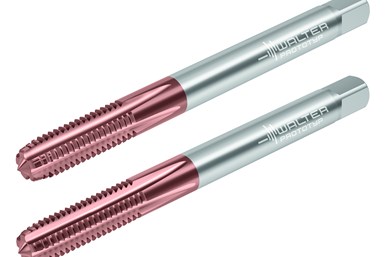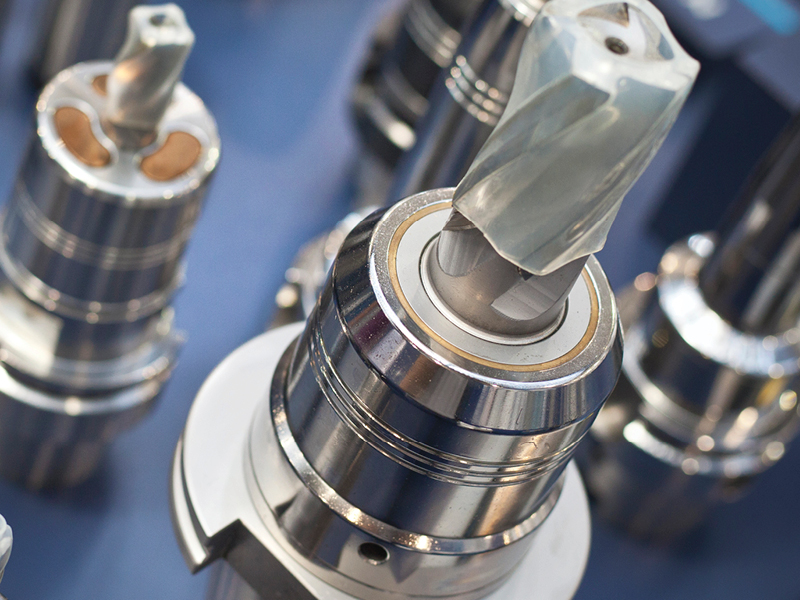Walter Offers New Solid-Carbide Taps for Blind-Hole Machining
Walter’s TC388 Supreme and TC389 Supreme feature patent-pending cutting geometries that fully shear off the root of the chip when reversing, thus minimizing torque peaks.
Walter introduces the TC388 and TC389 Supreme solid-carbide taps for threading hardened steel. According to Walter, the tools are designed to solve problems in blind-hole machining in particular, because reversing the tap during this process can cause torque peaks when the root of the chip is sheared off, resulting in tool failures.
Walter aims to solve this problem with the TC388 Supreme (50-58 RC) and TC389 Supreme (55-65 RC) with its new patent-pending cutting geometries that fully shear off the root of the chip when reversing, thus minimizing torque peaks. This prevents fractures, prolongs the tool life and increases process reliability. Furthermore, the new taps are coated using Walter’s new HiPMS coating technology, which is said to create a better surface finish and improve thread form quality. Lubrication with oil, which was often necessary until now, is no longer required; instead, standard water-based emulsions can be used, optimizing handling and saving additional machining costs. The TC388 and TC389 can be used for tapping both blind-hole and through-hole threads up to 2 × DN.
RELATED CONTENT
-
Machining Dry Is Worth A Try
Reducing cutting fluid use offers the chance for considerable cost savings. Tool life may even improve.
-
Taking The Fear Out Of Hard Turning
To make the transition to hard turning, you'll need to switch from carbide to CBN inserts, but that is easier (and more economical) than you might think. It's making the jump to much higher surface speeds that might scare you off. It needn't. Here's why.
-
Choosing The Best Drill Point Geometry
The more common twist drill point geometries often are not the best for the job at hand. By choosing the best point for the material being drilled, it is possible to achieve better tool life, hole geometry, precision, and productivity.










 (1).1676494398075.png)

